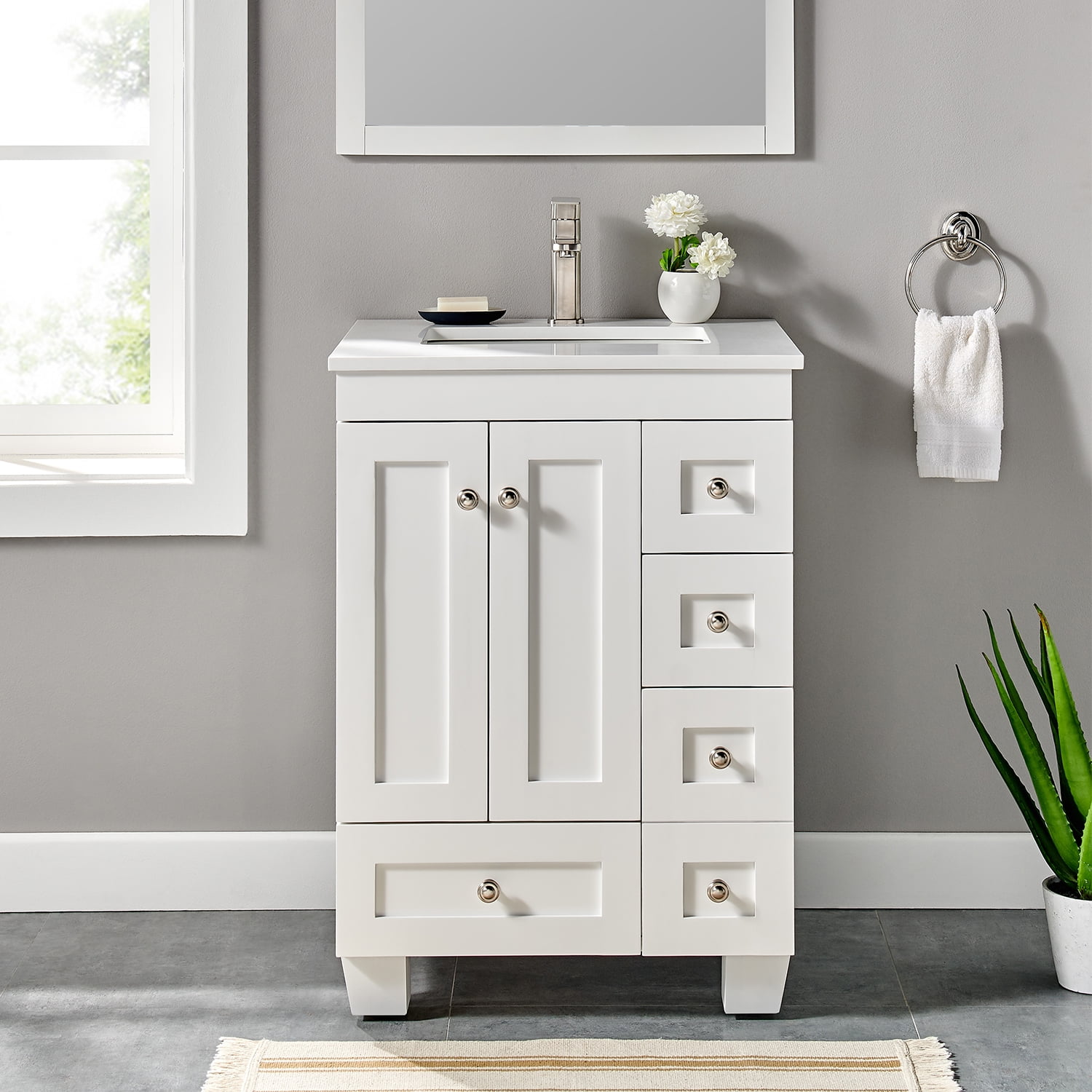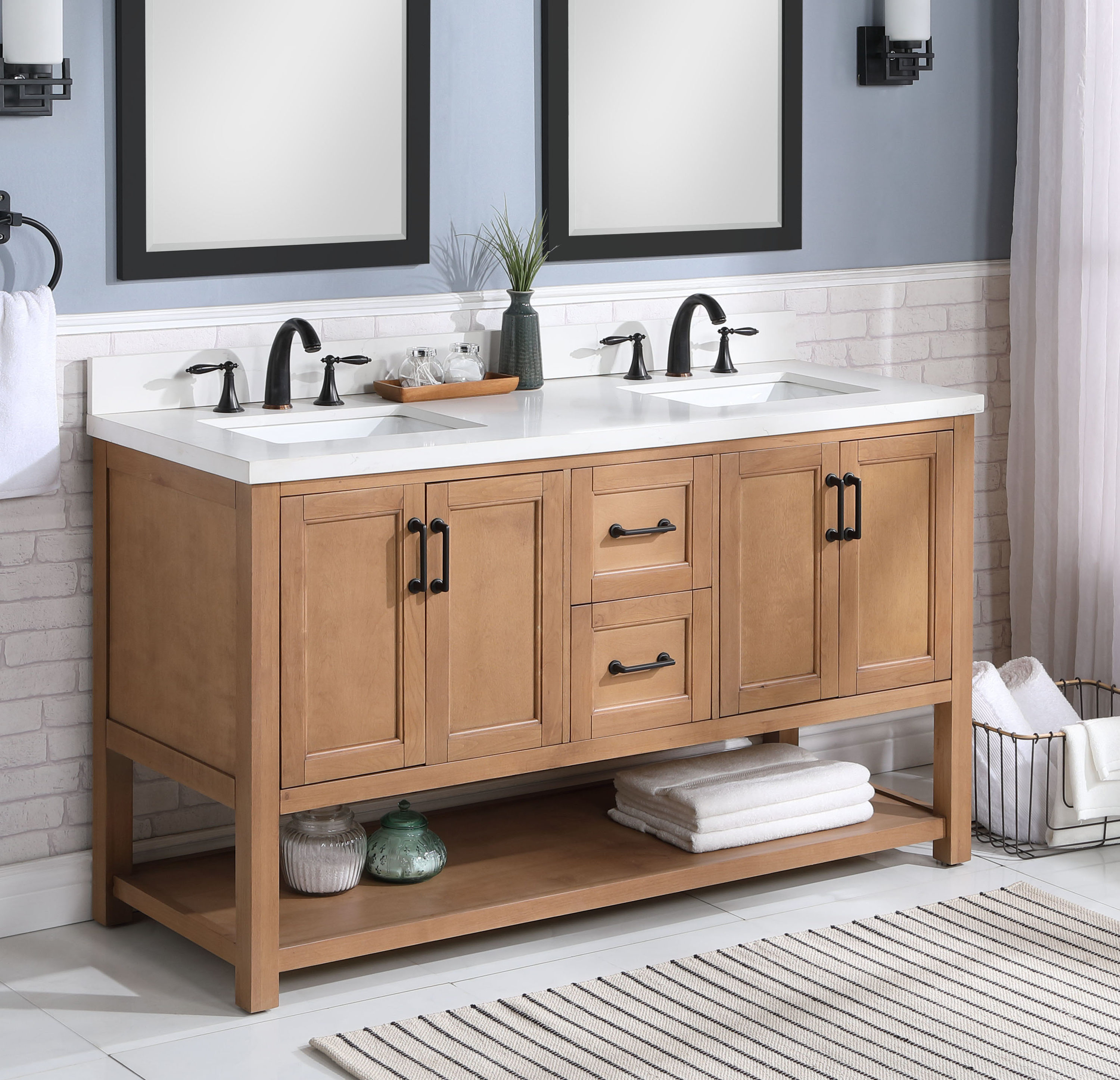The Rise of the Compact Bathroom Vanity

The bathroom is often a space that is overlooked when it comes to design and functionality. However, in recent years, there has been a growing trend towards smaller bathrooms and more efficient use of space. This shift has led to a surge in popularity for compact bathroom vanities, particularly those measuring between 24 and 28 inches in width. These vanities offer a perfect balance of style and practicality, making them ideal for both small and large bathrooms.
Design Considerations for Compact Vanities
Compact vanities are designed to maximize storage space within a limited footprint. They often feature clever storage solutions like drawers, shelves, and cabinets that allow homeowners to keep their bathroom essentials organized and out of sight. These vanities come in a wide range of styles, from traditional to contemporary, ensuring that there is an option to complement any bathroom décor.
Space-Saving Benefits of Compact Vanities
One of the primary advantages of using compact vanities is their ability to save valuable floor space. This is especially beneficial in smaller bathrooms where every inch counts. Compact vanities can help to create a sense of spaciousness and minimize clutter, making the bathroom feel more inviting and functional.
Examples of Bathroom Layouts Where Compact Vanities Excel
Compact vanities are particularly well-suited for a variety of bathroom layouts, including:
- Powder Rooms: Compact vanities are the perfect choice for powder rooms, which are typically small and designed for quick use.
- Small Bathrooms: In small bathrooms, compact vanities can help to maximize floor space and prevent the bathroom from feeling cramped.
- Guest Bathrooms: Compact vanities are a practical and stylish option for guest bathrooms, providing ample storage for toiletries without taking up too much space.
- Master Bathrooms: Even in larger master bathrooms, compact vanities can be used strategically to create separate vanity areas for multiple users, offering a more personalized and efficient bathroom experience.
Style and Design Considerations

Choosing the right style and design for your 24-28 inch bathroom vanity is crucial to creating a cohesive and functional space. The compact size of these vanities doesn’t limit your design choices; it simply encourages you to think creatively about how to maximize space and style.
Popular Vanity Styles, 24 28 bathroom vanities
The style of your vanity will significantly impact the overall aesthetic of your bathroom. Consider the following popular styles:
- Traditional: Traditional vanities often feature ornate details, such as carved wood, elaborate hardware, and classic silhouettes. They evoke a sense of timeless elegance and sophistication.
- Contemporary: Contemporary vanities embrace clean lines, minimalist designs, and modern materials like stainless steel or sleek acrylic. They create a sense of simplicity and functionality.
- Transitional: Transitional vanities blend elements of traditional and contemporary styles, creating a harmonious balance between classic and modern aesthetics. They often feature simple lines with subtle details or accents.
Vanity Construction Materials
The material used for your vanity’s construction impacts its durability, aesthetic, and price.
- Wood: Wood vanities offer a classic look, natural warmth, and durability. Popular choices include oak, maple, cherry, and walnut.
- Laminate: Laminate vanities are more affordable and offer a wide range of colors and finishes. They are also resistant to moisture and scratches.
- Marble: Marble vanities add a touch of luxury and elegance. They are naturally resistant to heat and moisture but can be prone to scratches and etching.
Unique Vanity Features
Consider incorporating unique features into your vanity design to enhance functionality and style:
- Integrated Storage: Many vanities offer integrated storage solutions, such as drawers, shelves, or pull-out baskets. This helps maximize space and keep your bathroom organized.
- Open Shelving: Open shelving provides a stylish and accessible way to display decorative items or bathroom essentials.
- Decorative Hardware: Hardware such as knobs, pulls, and hinges can add a touch of personality to your vanity. Choose from various materials like metal, ceramic, or glass to complement your chosen style.
Functionality and Features: 24 28 Bathroom Vanities

A compact bathroom vanity, while saving space, presents a unique challenge: maximizing functionality within a limited footprint. The right vanity should not only be aesthetically pleasing but also provide sufficient storage and practical features for everyday use.
Storage Space
Choosing a vanity with ample storage is crucial, especially in a small bathroom. Consider the following:
- Drawers vs. Cabinets: Drawers offer easy access to items, while cabinets provide more vertical storage space.
- Number of Drawers/Cabinets: Aim for a vanity with at least two drawers or cabinets to accommodate toiletries, towels, and other bathroom essentials.
- Drawer/Cabinet Size: Ensure drawers and cabinets are deep enough to store larger items like hair dryers or styling tools.
- Open Shelving: Open shelving can provide additional storage for decorative items or frequently used items.
Sink Types
24-28 inch vanities offer a range of sink options, each with its own advantages and disadvantages:
- Undermount Sinks: These sinks are installed beneath the countertop, creating a seamless and modern look. They are easy to clean and offer a larger basin area. However, undermount sinks can be more expensive and require professional installation.
- Vessel Sinks: These sinks sit on top of the countertop, adding a decorative element. Vessel sinks come in various shapes and materials and can be a focal point in the bathroom. However, they may have a smaller basin area and can be more challenging to clean.
- Drop-in Sinks: These sinks are the most common type and are simply dropped into a cutout in the countertop. They are affordable and easy to install. However, they may not offer the same sleek look as undermount or vessel sinks.
Countertop Materials
The countertop material is a significant design element that impacts both aesthetics and functionality. Here’s a comparison of popular countertop materials:
| Material | Advantages | Disadvantages |
|---|---|---|
| Granite | Natural beauty, durable, heat-resistant, stain-resistant | Expensive, requires sealing, can be porous |
| Quartz | Durable, non-porous, stain-resistant, wide range of colors | More expensive than laminate, can be scratched |
| Laminate | Affordable, easy to maintain, wide range of styles | Less durable than granite or quartz, can be easily scratched or damaged |
